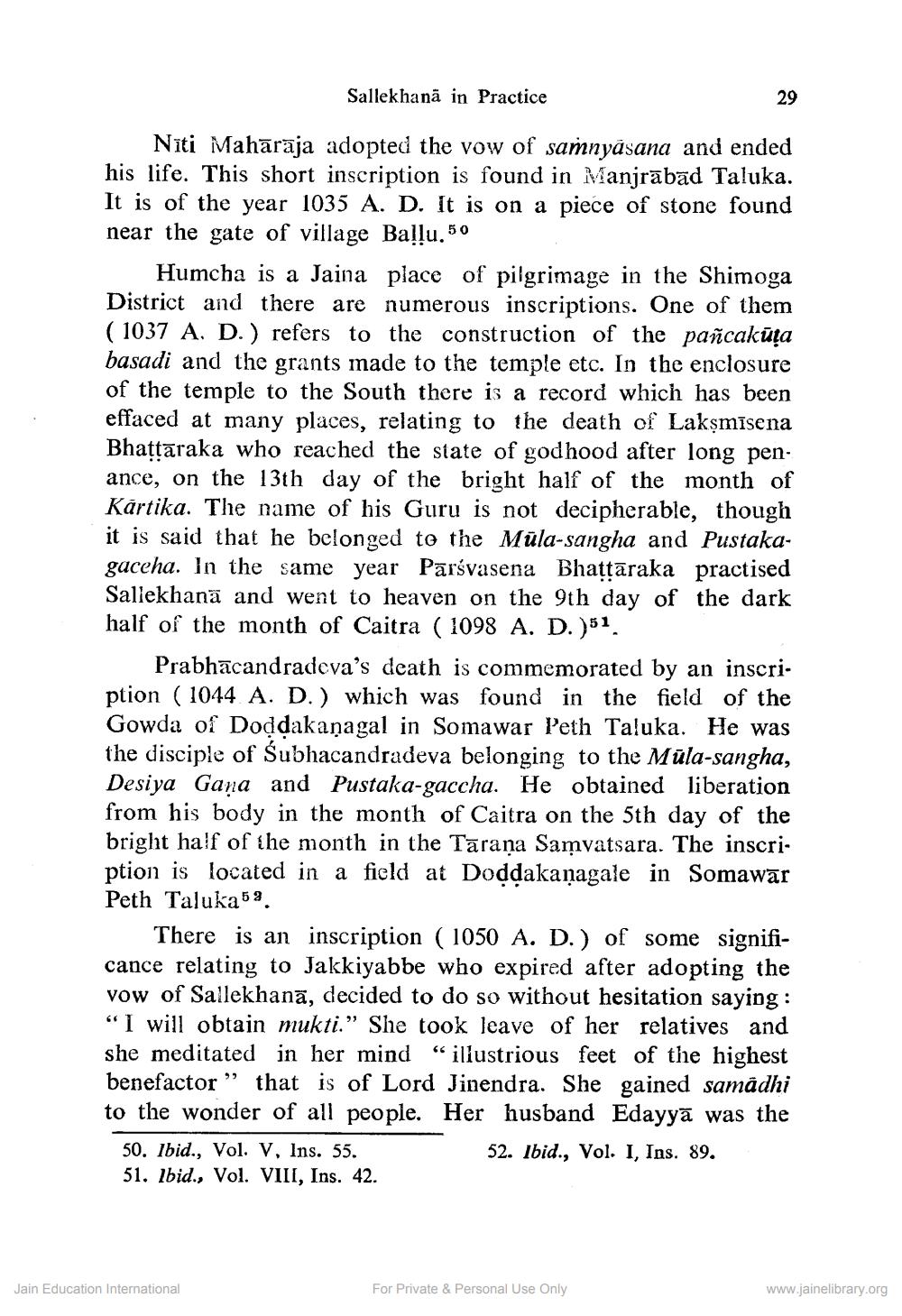________________
Sallekhanā in Practice
Nīti Mahārāja adopted the vow of samnyāsana and ended his life. This short inscription is found in Manjrābād Taluka. It is of the year 1035 A. D. It is on a piece of stone found near the gate of village Balļu. 50
Humcha is a Jaina place of pilgrimage in the Shimoga District and there are numerous inscriptions. One of them ( 1037 A. D.) refers to the construction of the pañcakūța basadi and the grants made to the temple etc. In the enclosure of the temple to the South there is a record which has been effaced at many places, relating to the death of Laksmisena Bhattāraka who reached the state of god hood after long pen. ance, on the 13th day of the bright half of the month of Kārtika. The name of his Guru is not decipherable, though it is said that he belonged to the Müla-sangha and Pustakagaceha. In the same year Pārsvasena Bhattāraka practised Sallekhana and went to heaven on the 9th day of the dark half of the month of Caitra ( 1098 A. D.)51.
Prabhācandradeva's death is commemorated by an inscription ( 1044 A. D.) which was found in the field of the Gowda of Doddakaņagal in Somawar Peth Taluka. He was the disciple of Subhacandradeva belonging to the Müla-sangha, Desiya Gana and Pustaka-gaccha. He obtained liberation from his body in the month of Caitra on the 5th day of the bright half of the month in the Tāraṇa Samvatsara. The inscri. ption is located in a field at Doddakanagale in Somawar Peth Taluka5.
There is an inscription ( 1050 A. D.) of some significance relating to Jakkiyabbe who expired after adopting the vow of Sallekhanā, decided to do so without hesitation saying: “I will obtain mukti.” She took leave of her relatives and she meditated in her mind “illustrious feet of the highest benefactor” that is of Lord Jinendra. She gained samadhi to the wonder of all people. Her husband Edayyā was the 50. Ibid., Vol. V, Ins. 55.
52. Ibid., Vol. I, Ins. 89. 51. Ibid., Vol. VIII, Ins. 42.
Jain Education International
For Private & Personal Use Only
www.jainelibrary.org




